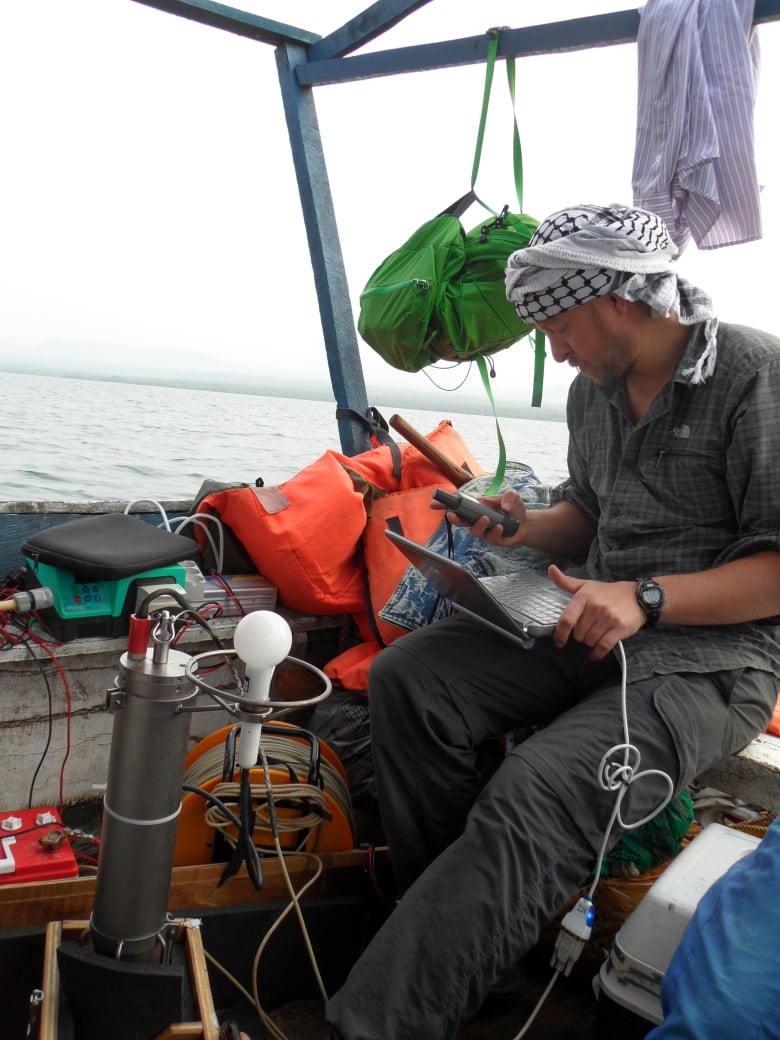Ancient oxygen discovery shakes up history of life on Earth
Soil analysis by B.C. scientist suggests photosynthesis evolved more than 3 billion years ago

Oxygen appeared in the Earth’s atmosphere up to 700 million years earlier than thought, according to a study led by a B.C. scientist, suggesting that revisions need to be made to current theories about how life evolved on Earth.
Up until now, scientists thought photosynthesis — the ability of living things such as algae and plants to harvest energy from the sun — first evolved in single-celled organisms about 2.7 billion years ago.
Because oxygen is produced during photosynthesis, early photosynthetic organisms are thought to have given rise to the Great Oxygenation Event, also known as the Great Oxidation, about 2.3 billion years ago.
The incident was thought to be the first time the atmosphere began accumulating significant amounts of oxygen. That is significant because complex multicellular organisms such as humans require an oxygen-rich atmosphere to survive.
The new study led by biogeochemist Sean Crowe has found surprising evidence that as far back as three billion year ago, there were levels of oxygen in the atmosphere too high to have been produced without living organisms.
The findings were published online in the journal Nature on Wednesday.
Oxygen leaves chemical fingerprint
Scientists figure out whether oxygen existed in the atmosphere during different eras by looking at samples of ancient rocks and soils, and checking for elements in states that only form during chemical reactions involving oxygen.
Crowe, an assistant professor in the department of Microbiology and Immunology and the department of Earth, Ocean and Atmospheric Sciences at the University of British Columbia, said people have detected traces of oxygen before in samples older than 2.3 billion years, but the signals were never strong enough to make a conclusion.

That is partly because most ancient samples analyzed were marine sediments from the bottom of the ocean, which aren’t in direct contact with the atmosphere, and therefore don’t show very strong oxygen signals at the best of times.
However, researchers in South Africa recently discovered an ancient land-based soil sample called a paleosol that dated back three billion years.
Crowe, in collaboration with colleagues at the University of Southern Denmark, where he was previously a postdoctoral researcher, decided to test the samples for oxygen. The researchers employed a new, more sensitive technique that involves looking for forms of chromium that only occur following reaction with oxygen.
Given the age of the samples, Crowe didn’t expect to find any oxygen. So he was surprised when the tests showed “low but appreciable concentrations.”
“Initially we thought we must have done something wrong or there was something wrong with the samples,” Crowe said.
To verify the results, researchers tested marine samples that were about the same age. Using the new chromium technique, they too showed a positive signal for oxygen.
“We were very excited,” Crowe said. “Immediately we knew there was oxygen in the atmosphere well before we understood it to be.”
The oxygen levels detected in the samples were only a 10,000th of present day levels of 20 per cent of the atmosphere, and a 200th to a 500th of the levels that immediately followed the Great Oxygenation Event.
Evidence of photosynthesis
But computer modelling showed that the oxygen levels three billion years ago were still five times higher than the amount that could be generated by chemical reactions in the atmosphere alone, without the help of photosynthesizing living organisms.

“Because we capture oxygen in the atmosphere three billion years ago, the likelihood is that oxygen-producing organisms evolved before that — very early in Earth’s history.”
The first life is thought to have formed on Earth about 3.8 to 3.5 billion years ago, shortly after the Earth became cool enough to form oceans and continents.
The results of the study suggest that it doesn’t take very long for organisms with complex metabolisms, such as those required for photosynthesis, to evolve. But it does take a long time for oxygen levels to get high enough to support complex life.
Crowe said it’s not clear why that is, but geological processes likely play a role, and those geological processes may, therefore, have had a big influence on the development of complex life.
He added that it’s still unknown whether oxygen levels dropped or whether they stayed high. It’s also possible that oxygen appeared earlier than three billion years ago, he said.
“Filling in the geological record of oxygen,” he said, “is still important to do.”